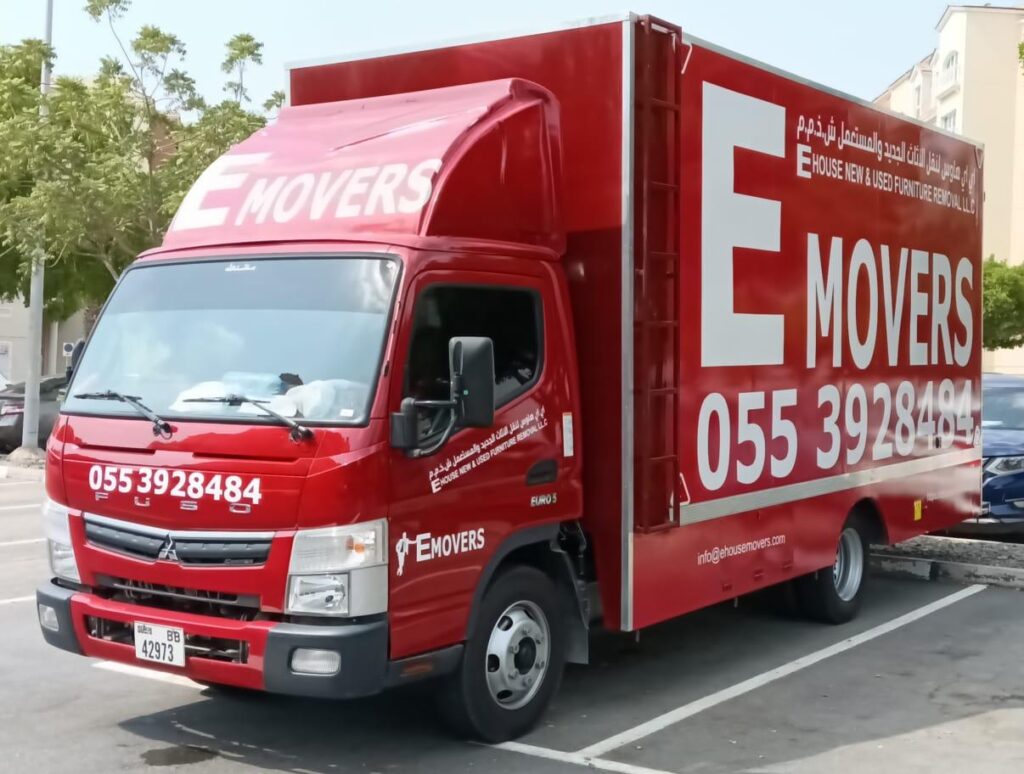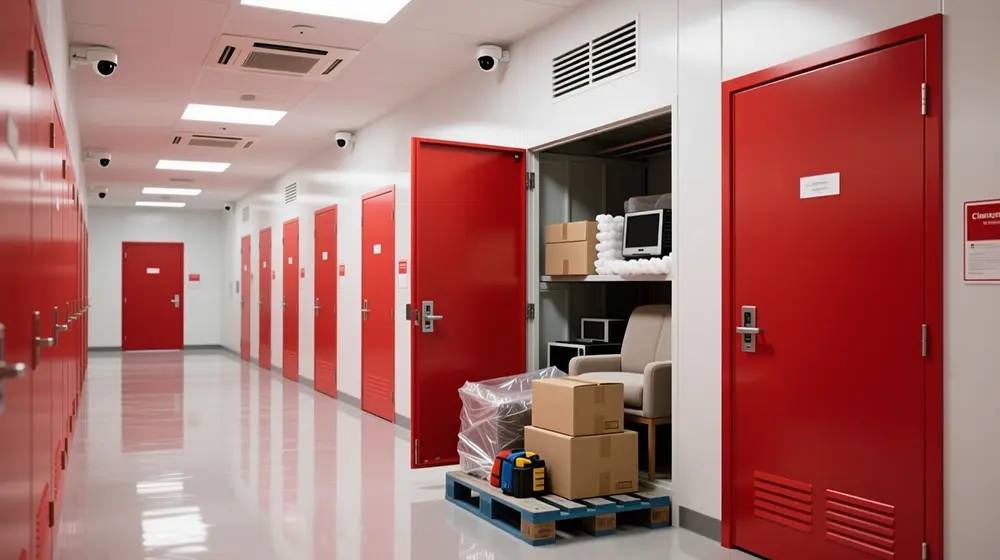What makes access roads decisive for self-storage operations in Dubai?
Heavy-vehicle access determines whether inbound/outbound loads actually reach your units on time; restrictions, geometry, and permits set the real operating window. Dubai applies corridor- and zone-specific truck bans, requires permits in exceptional cases, and limits vehicle size/weight—so siting and scheduling must follow those rules precisely.
Which truck timings and corridors are actually restricted today?
Dubai restricts trucks in peak hours 06:30–08:30, 13:00–15:00, and 17:30–20:00 on key corridors such as Sheikh Mohammed bin Zayed Road; additional 16-hour bans (06:00–22:00) apply on certain streets and all crossings, and a new evening ban (17:30–20:00) runs on Emirates Road toward Sharjah. These rules are enforced by RTA and Dubai Police.
Implication for storage yards: Book heavy moves outside these windows or obtain a specific mobility permit if you must cross during a ban.

Do heavy vehicles need permits to use banned roads or times?
Yes—RTA’s “Mobility Permit for Heavy Vehicles in Banned Times and Roads” allows movements on main roads, in peak times, or within city-centre bans under limited, pre-approved cases. Plan lead-time for approvals and keep documentation in the cab.
What legal sizes and weights define a “compliant” truck in the UAE?
Federal rules cap single vehicles at ~12.5 m (L) × 2.6 m (W) × 4.6 m (H), prime mover + semi-trailer at ~21 m length (4.6 m height), and road trains up to ~28 m; six-axle vehicles max at 65 t gross. Axle caps include 8 t (single steerable) and 26–33 t (tandem/triple). Violations can incur fines up to AED 15,000.
What geometric road features should a storage site verify before signing a lease?
Provide ≥ 6.5 m clear access width and turning geometry suitable for ~15 m trucks; design loading/unloading zones that allow 90° manoeuvres without reversing into public right-of-way. Dubai free-zone “Blue Code” pages specify turning radii and width for 15 m vehicles and require geometry to international standards.
Minimums to validate (site due-diligence checklist):
- Clear width to bay: ≥ 6.5 m (or more if two-way).
- Internal turning: 90° manoeuvre templates for ~15 m trucks.
- Overhead clearance: ≥ 4.6 m (matching legal height).
- Pavement: structural capacity aligned to permitted gross/axle loads (up to 65 t / 33 t triple).
How do tolls (Salik) affect heavy-vehicle route costs and timing?
Dubai now runs variable Salik pricing: AED 6 per crossing at peak (06:00–10:00 & 16:00–20:00), AED 4 off-peak, and free 01:00–06:00; Sundays are flat AED 4. Use early-morning windows to cut both toll and congestion costs.
What special-zone rules apply around ports and free zones (e.g., Jebel Ali/JAFZA)?
JAFZA periodically adjusts gate usage: e.g., gates 10/11 designated for heavy-vehicle entry/exit during certain changes; trucks need active tokens/gate passes for specific gates. Confirm gate routing and obtain day passes/NOCs ahead of arrival.
How will upcoming infrastructure change heavy-vehicle accessibility to storage sites?
Dubai’s Five-Year Internal Roads Plan (2025–2029) adds 634 km of internal roads across 12 areas at AED 3.7 bn; this improves access in residential/industrial districts. Prioritize sites that sit on or near corridors slated for upgrades.
Macro plan alignment: The Dubai 2040 Urban Master Plan concentrates logistics/connectivity improvements and promotes efficient multi-modal movement—favouring industrial clusters with better truck access over time.

What is the optimal routing strategy for storage operators handling 10–65 t vehicles?
Plan off-peak windows, pre-clear permits, and align with free/low-toll time bands; avoid 16-hour restricted corridors altogether when possible. For SMZR/Emirates Road, model three legs: supplier → ring road (off-peak) → storage yard (gate slot).
Five-step playbook:
- Overlay bans (by corridor/time) on your routing map.
- Choose toll strategy (defer to 01:00–06:00 where feasible).
- Validate geometry at site (≥ 6.5 m width; template for 15 m truck).
- Confirm weights/dimensions vs. UAE caps (up to 65 t/4.6 m height).
- Reserve gate slots/passes for free zones and ports.
Which on-site design choices reduce turn-around time for 40-ft/45-ft trailers?
Straight-through circulation (in-one-side/out-the-other) with dedicated staging lanes, right-angle dock approach geometry for ~15 m trucks, and no backing into public roads cuts cycle time and incident risk. The Blue Code requires appropriate turning radii and specifies ≥ 6.5 m width for heavy-vehicle manoeuvres.
How should storage managers schedule daily heavy-vehicle waves?
A two-wave plan—Wave A: 05:00–06:20 (pre-ban) and Wave B: 20:10–00:59 (post-ban/off-peak)—minimizes clashes with peak restrictions and maximizes AED 4 or AED 0 toll windows. Build a permit contingency for urgent loads that fall into 06:30–08:30 / 13:00–15:00 / 17:30–20:00.
What about autonomous heavy vehicles—do they change storage logistics?
RTA has adopted a regulatory framework and pilot routes for autonomous heavy vehicles, targeting safer, more predictable freight movements; early adopters among 3PLs can reduce human-factor delays on fixed corridors. Track pilot routes connecting Jebel Ali Port and logistics hubs to plan future yard hours.
Site selection: where should new self-storage facilities look for truck-friendly access?
Prefer industrial belts with arterial proximity (e.g., SMZR/Emirates Road adjacencies) and future internal-road projects; de-prioritize inner neighbourhoods with 16-hour restrictions and creek crossings that constrain height/flow. Use the 2040 plan and 2025–2029 road list as filters in the SPA/lease phase.
Quick compliance matrix (cut-out & keep)
- Times to avoid: 06:30–08:30, 13:00–15:00, 17:30–20:00 (corridor-specific).
- Extra corridor bans: up to 06:00–22:00 on major streets and crossings; check RTA bulletins.
- Height/length envelope: up to 4.6 m height; 12.5–28 m length (configuration specific).
- Gross weight ceiling: up to 65 t (six-axle), with axle-group caps (8–33 t).
- Access width on site: ≥ 6.5 m clear; turning radii per 15 m truck template.
- Tolls: AED 6 peak, AED 4 off-peak, free 01:00–06:00; plan crossings accordingly.
- Permits: RTA mobility permit for movements in banned times/roads.
- Ports/free zones: verify active gate passes and current gate usage (e.g., JAFZA gates 10/11).
FAQ (snippet-ready Q→A per your <40-word rule)
Q: What is the safest time to schedule heavy trucks to a Dubai storage yard?
Before 06:30 and after 20:00, aligning with off-peak bans and lower Salik pricing.
Q: What minimum access width should a site offer?
A: ≥ 6.5 m with turning radii suitable for ~15 m trucks
Q: What is the legal truck height limit?
A: 4.6 m for most heavy vehicles on federal roads.
Q: Can trucks use banned roads during peak if urgent?
A: Yes, with an RTA mobility permit granted for limited cases.
Q: How do upcoming roads affect storage site choice?
A: The 2025–2029 plan adds 634 km; pick sites along corridors slated for upgrades.
Implementation workbook (for ops teams)
- Map your pickup/delivery origins and candidate yards; overlay ban windows and Salik gates.
- Filter sites by ≥ 6.5 m access width and 15 m-truck turning.
- Validate legal weight/dimension envelopes per load type.
- Schedule two waves (pre-06:30, post-20:00) and pre-book mobility permits for exceptions.
- Confirm free-zone gate passes and current gate routings before dispatch.
- Re-check quarterly against new RTA notices and 2025–2029 road projects.






